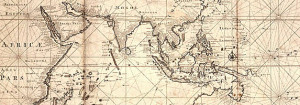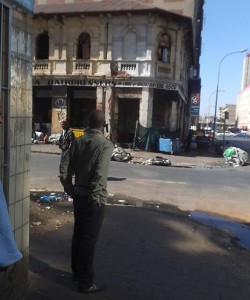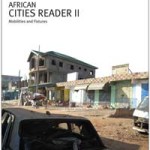Coursera ~ We Provide Universal Access To The World’s Best Education
 Coursera is an education platform that partners with top universities and organizations worldwide, to offer courses online for anyone to take.
Coursera is an education platform that partners with top universities and organizations worldwide, to offer courses online for anyone to take.
The Coursera experience
It’s simple. We want to help you learn better and faster. That’s why we designed our platform based on proven teaching methods verified by top researchers.Here are 4 key ideas that were influential in shaping our vision:
– Effectiveness of online learning
– Mastery learning
– Peer assessments
– Blended learning
Go to: https://www.coursera.org/
Betico Croes ~ E Lucha
Betico Croes – Historia di e lucha pa Status Aparte di Aruba den Reino Hulandes. Historia di Aruba cu abo como Arubiano no mag di lubida!
KNAW Huygens ING ~ The Dutch In The Caribbean World, C. 1670-C. 1870
 This project offers a research tool in two parts:
This project offers a research tool in two parts:
a) a guide to archival sources on the Dutch colonies in the Caribbean World and
b) a summary of the relevant laws and regulations of the period.
ARCHIVES
Search the archival sources on the Dutch colonies in the Caribbean World.
CREATORS
Search creators of the archives on the Dutch colonies in the Caribbean World.
LEGISLATION
Search the legislation about the slavery and multicultural relations in the Dutch colonies.
Go to: http://dutch-caribbean.huygens.knaw.nl/
About the project:
After experiencing many wars, the Dutch possessions in the West Indies entered a much more quiet period from the 1670s onwards. In the Caribbean the Dutch possessions concerned a few islands of the Antilles (Curaçao, Aruba, Bonaire, St. Martin, St. Eustatius and Saba) and some of the great estuaries on the Wild Coast, including the rivers nearby (Suriname, Berbice, Essequibo and Demerara).
As a result of the wars in the wake of the French Revolution, after a long British interregnum, the colonies of Berbice, Essequibo and Demarara were lost to the Dutch by treaty in 1814. Later on the separate areas merged to become British Guiana. Within these colonies a whole social fabric of multicultural relations took shape. The society became rather stratified, and social status became defined by clear conventions about class, colour and religion. The phenomenon of slavery played a central role in this formation. In the remaining Dutch colonies after 1814, slavery as such was only abolished in 1863, but in Suriname the former slaves still had to carry out, under government supervision, paid work on a plantation of their own choice for a period of ten years. The period between 1670 and 1870 can be called the ‘classic era’ of the Dutch colonial presence in the Caribbean world. A separate description of the government administration and justice for this period can be consulted in Han Jordaan and Marijcke Schillings, ‘Organisatie van bestuur en rechtspraak in de Nederlandse Caraïbische wereld’.
Pieter van Dam’s Beschryvinge van de Oostindische Compagnie 1693-1701
 Uitgegeven door F.W. Stapel en C.W.Th. baron van Boetzelaer van Asperen en Dubbeldam (jaar van publicatie: 1927-1954)
Uitgegeven door F.W. Stapel en C.W.Th. baron van Boetzelaer van Asperen en Dubbeldam (jaar van publicatie: 1927-1954)
Pieter van Dam (1621-1706), advocaat van de Verenigde Oost-Indische Compagnie (VOC), kreeg in 1693 van Heren Zeventien de opdracht een handleiding en naslagwerk samen te stellen van de VOC vanaf het ontstaan tot dan toe. Van Dam is er in geslaagd een geschiedwerk te schrijven waarin het reilen en zeilen van de VOC uitgebreid wordt geschetst, gestaafd met vele bronverwijzingen.
Hij behandelt achtereenvolgens de oprichting van de VOC, het bedrijf en de verkoop van de Aziatische producten in Europa; de ontwikkeling van de handel in Azië en het veroveren en besturen van de gebieden aldaar; de bestuursorganen, rechtspraak, leger en vloot in Azië; Nederlandse volksplantingen en allerlei misbruiken; kerkelijke zaken. Het niet meer aanwezige vijfde boek schetste de geschillen met de Engelsen.
Op het gebied van de gewenste bronnenpublicaties van de overzeese geschiedenis noemde de Commissie van Advies voor ‘s Rijks Geschiedkundige Publicatiën in 1902 Van Dams Beschryvinge van de Oostindische Compagnieals eerste . De Beschryvinge bevat bijzonderheden die nergens anders meer te vinden zijn. Het werk is nuttig als beginpunt voor een onderzoek met betrekking tot de VOC in de 17e eeuw. Het was uitsluitend bestemd voor Heren Zeventien waardoor Van Dam zich niet gedwongen voelde zaken te verzwijgen of goed te praten.
Ten behoeve van het onderzoek in VOC-archieven is op basis van de afzonderlijke glossaria (woordverklaringen) van de uitgaven over de VOC in de RGP een algemeen VOC-glossarium samengesteld dat online raadpleegbaar is.
Ga naar de digitale versie: http://resources.huygens.knaw.nl/vocbeschrijvingvandam
Zie ook: Bronnen, data en tools: https://www.huygens.knaw.nl/tools-en-data/
Het Huygens ING streeft ernaar bronnen en data op een zorgvuldige en wetenschappelijk verantwoorde wijze online te publiceren. Innovatieve tools proberen we zo toegankelijk mogelijk te maken. We hebben een enorme hoeveelheid aan kennis in huis, die we graag willen delen met academische collega’s en het bredere publiek.
Gushwell Brooks ~ Reporter’s Notebook: Joburg, A Tale Of Two Cities

Photo: Sam Ncube in front of the second building we visited as part of our investigation into abandoned buildings in Johannesburg CBD.
If you had to ask Gauteng Premier David Makhura or Johannesburg Mayor Parks Tau to describe the city of Johannesburg, they would tell you that it is “a World Class African City”. It makes sense: that is how you get politicians and businessmen from Shanghai, Washington DC, Berlin and New Delhi to board business class flights and private jets to sign multibillion rand deals in Africa’s most valuable square mile. With all due respect to Abuja and Lagos, Johannesburg is where the heart of the African economy beats.
Add to that Johannesburg’s international, cosmopolitan appeal with trendy fashions, expensive supercars and cool nightlife, and it makes you feel as if you are in the middle of Manhattan on a Friday night. Beneath the glitter and glam, money is sheltered from the underbelly of a Darwinian struggle for survival, where poverty and deprivation leave human beings tussling for basic essentials such as food, shelter and even water.
Read more: http://www.dailymaverick.co.za/a-tale-of-two-cities
David Smith ~ Johannesburg’s Ponte City: ‘The Tallest And Grandest Urban Slum In The World’ – A History Of Cities In 50 Buildings, Day 33
“On the 13th and 14th floor you could get anything from a blow-job to an acid trip in a few minutes. Essentially, the building was hijacked.”
In his penthouse apartment on the 52nd floor, Mike Luptak is talking about the bad old days when Ponte, the tallest residential building in the southern hemisphere, fell into the hands of drug dealers, gangsters, pimps and prostitutes. The inner core of this 173-metre high concrete cylinder became a giant rubbish tip piled up as far as the fifth floor. Among the refuse and junk were, so legend has it, the bodies of residents who took a suicidal leap.
A great deal has changed since then. Featured in newspaper articles, photography exhibitions, documentaries and movies, Ponte has come to symbolise the rise and fall and rise again of South Africa’s commercial capital. It is part of an inner-city renaissance in recent years that has seen previous no-go areas turned into gourmet food markets, artists’ studios and trendy apartments.
Read more: http://www.theguardian.com/ponte-city


